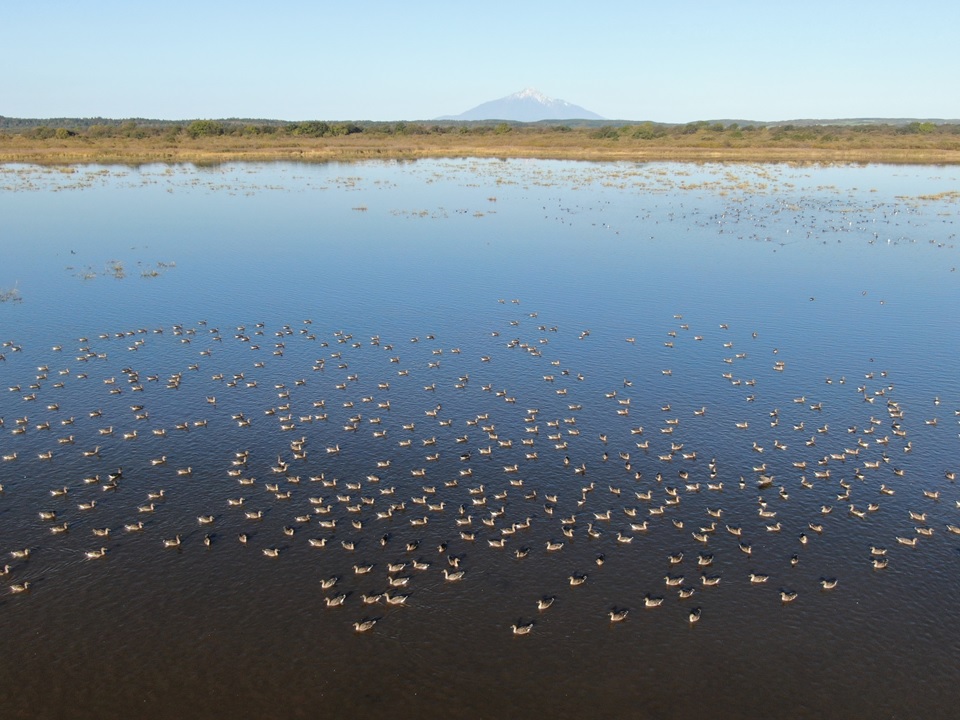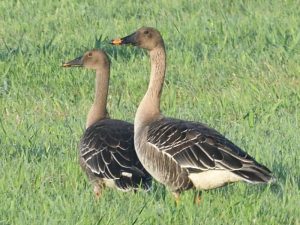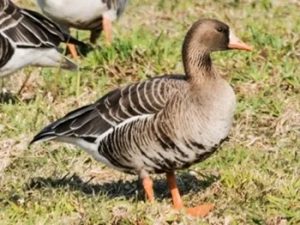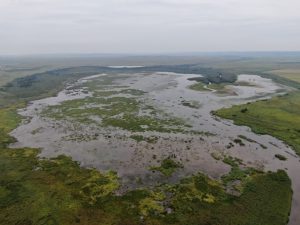On 25th October 2021, the EAAFP and its Partners welcomed Sarobetsu Wetland in Japan as the new Flyway Network Site (EAAF 151). This also marks the 34th Flyway Network Site (FNS) in Japan and the 151th in EAAFP Flyway Site Network. As one of the northern-most FNS in Hokkaido, Japan, Sarobetsu Wetland serves as the gateway for migratory waterfowl arriving from their breeding grounds in Russia.
The certificate was passed at the ceremony held in the Sarobetsu Wetland Centre on 25 October. Mr. Naohisa Okuda, Director of the Nature Conservation Bureau of the Ministry of the Environment handed the certificate over to Mr. Seiichi Kawata, the Mayor of Toyotomi Town where Sarobetsu Wetland is located. Mayor Kawata said, “it is a great honor to have Sarobetsu Wetland been designated as a Flyway Network Site. Sarobetsu Wetland is the entrance gate for migratory waterbirds to Japan, and we would like to conserve it in cooperation with various sectors including NGOs and private sectors and the MOE. ”
“We are very happy to be able to celebrate the successful designation of this internationally important site for migratory waterbirds. Japan is one of the founding Partners of the EAAFP, and has taken a leading role in expanding the Flyway Site Network. The ongoing development of this Network is critical to maintain populations of migratory waterbirds of the Flyway.” said Doug Watkins, Chief Executive of EAAFP Secretariat.
Sarobetsu Wetland consists of peatlands, including swamps and open bogs, moor and lakes along the Sarobetsu River. The site is within the Rishiri-Rebun-Sarobetsu National Park and part of a Ramsar Site. The site covers 2,000 hectares of wetlands and these provide important habitats for migratory waterbirds to staging during migration. The site regularly supports 20,000 to over 40,000 migratory waterbirds.
Among these migratory waterbirds, Sarobetsu Wetland is especially important for Anatids. Recent surveys showed that some 46% of the East Asian population of Middendorfi’s Bean Goose Anser fablis middendorffi as well as an average 14% of the East Asian population of Greater White-fronted Goose Anser albifrons regularly use the site. The site also supports two globally threatened species under the IUCN Red List, including Endangered Red-crowned Crane Grus japonensis and Vulnerable Lesser White-fronted Goose Anser erythropus.
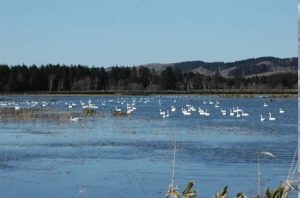 Floodplain © Sarobetsu Eco Network |
For more information, please visit: https://www.eaaflyway.net/japan/
Japanese Version
「サロベツ湿原」が渡り性水鳥重要生息地ネットワークに加わりました!
2021年10月25日、東アジア・オーストラリア地域フライウェイ・パートナーシップ(EAAFP)及びパートナーは、日本の「サロベツ湿原」を、渡り性水鳥重要生息地ネットワークの151番目の参加地 [EAAF151] として迎えました。日本では34番目のフライウェイネットワークサイトとなります。サロベツ湿原は、北海道の最北端に位置する重要生息地の一つとして、ロシアの繁殖地から日本に飛来する渡り性水鳥の玄関口となっています。
10月25日、サロベツ湿原センターで催された祝典で、環境省自然環境局の奥田直久局長より、サロベツ湿原がある豊富町の河田誠一町長に認定証が授与されました。河田町長は、「サロベツ湿原がフライウェイネットワークサイトに参加認定されたことは大変名誉なことです。サロベツ湿原は、日本へ飛来する渡り性水鳥の玄関口であり、今後も、NGO、民間セクター及び環境省などの様々なセクターと協力して、サロベツ湿原の保全を進めていきたいと思います」と述べました。
EAAFP事務局の事務総長ダグ・ワトキンス氏は次のように述べています。「我々は、渡り性水鳥の国際的に重要な生息地が指定されたことをお祝いすることができ、大変喜ばしく思います。日本は、EAAFP創設時のパートナーであり、渡り性水鳥重要生息地ネットワークの拡大に重要な役割を果たしてきました。本ネットワークを継続的に発展させることは、フライウェイの渡り性水鳥の個体数を維持する上で非常に重要です。」
サロベツ湿原は、サロベツ川流域に形成された、高層湿原、河川、湖沼を含む泥炭地です。利尻礼文サロベツ国立公園内にあり、ラムサール条約湿地の一部です。本サイトは2,000haの湿地をカバーしており、渡り性水鳥の重要な中継地となっています。また、定期的に2万から4万羽以上の渡り性水鳥を支えています。
これらの渡り性水鳥の中でもガンカモ類にとって、サロベツ湿原は特に重要です。最近の調査では、東アジアに生息するオオヒシクイの個体数46%と東アジアに生息するマガンの個体数の平均14%が、定期的にこのサイトを使用していることがわかりました。また、本サイトは、国際自然保護連合(IUCN)が作成した絶滅のおそれのある野生生物のリスト (レッドリスト)にEndangered(危機)として掲載されているタンチョウやVulnerable(危急)として掲載されているカリガネのように、世界的に絶滅の危機に瀕している種を支えています。
 Floodplain © Sarobetsu Eco Network |

